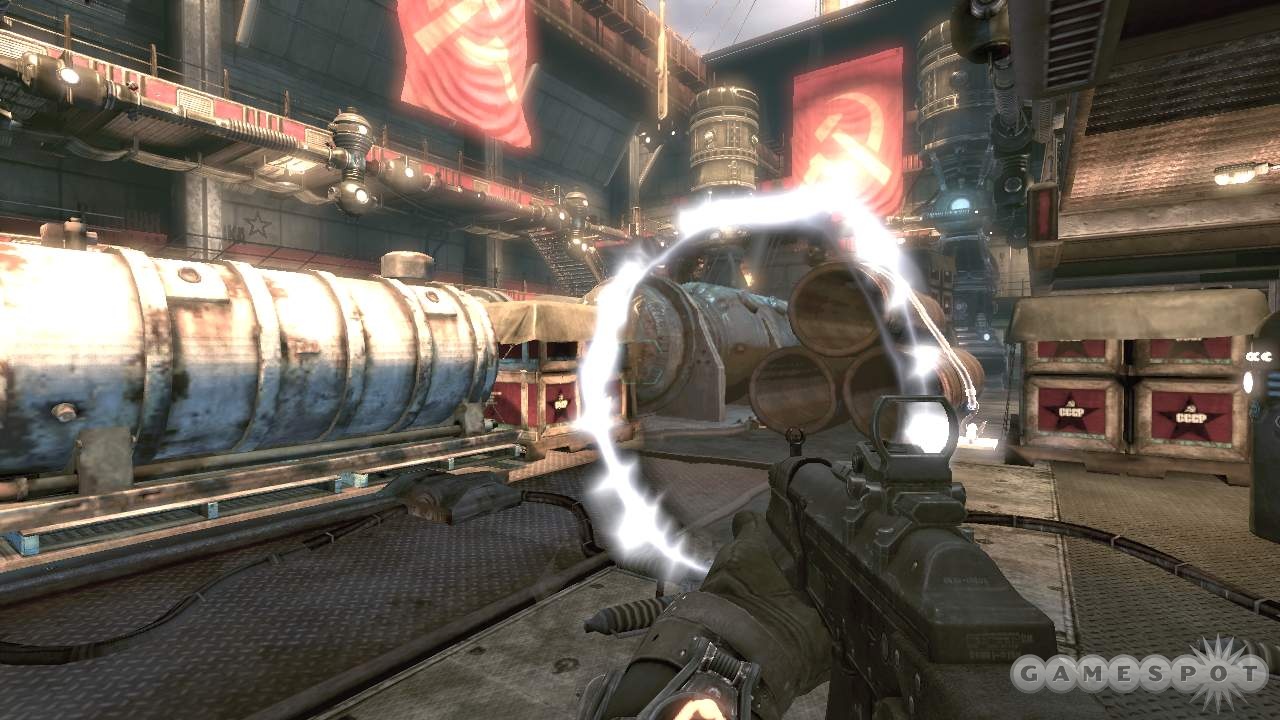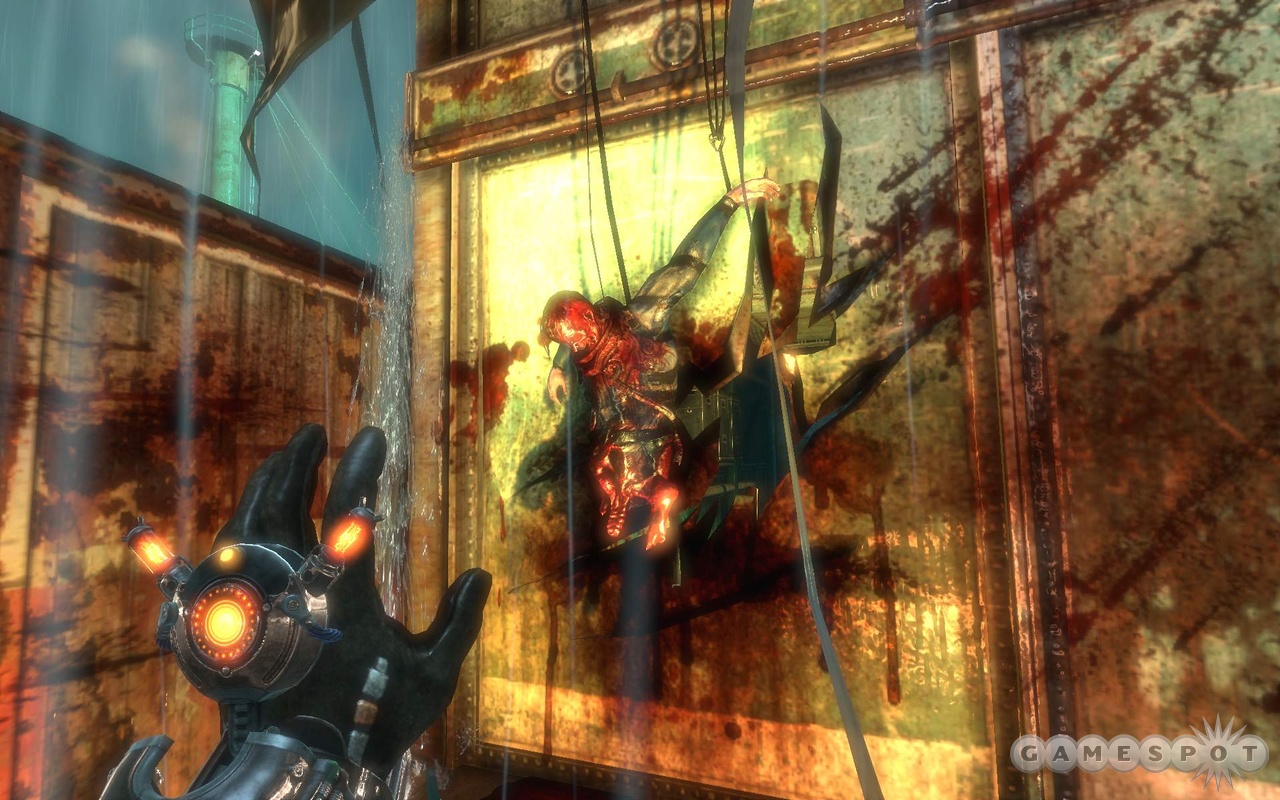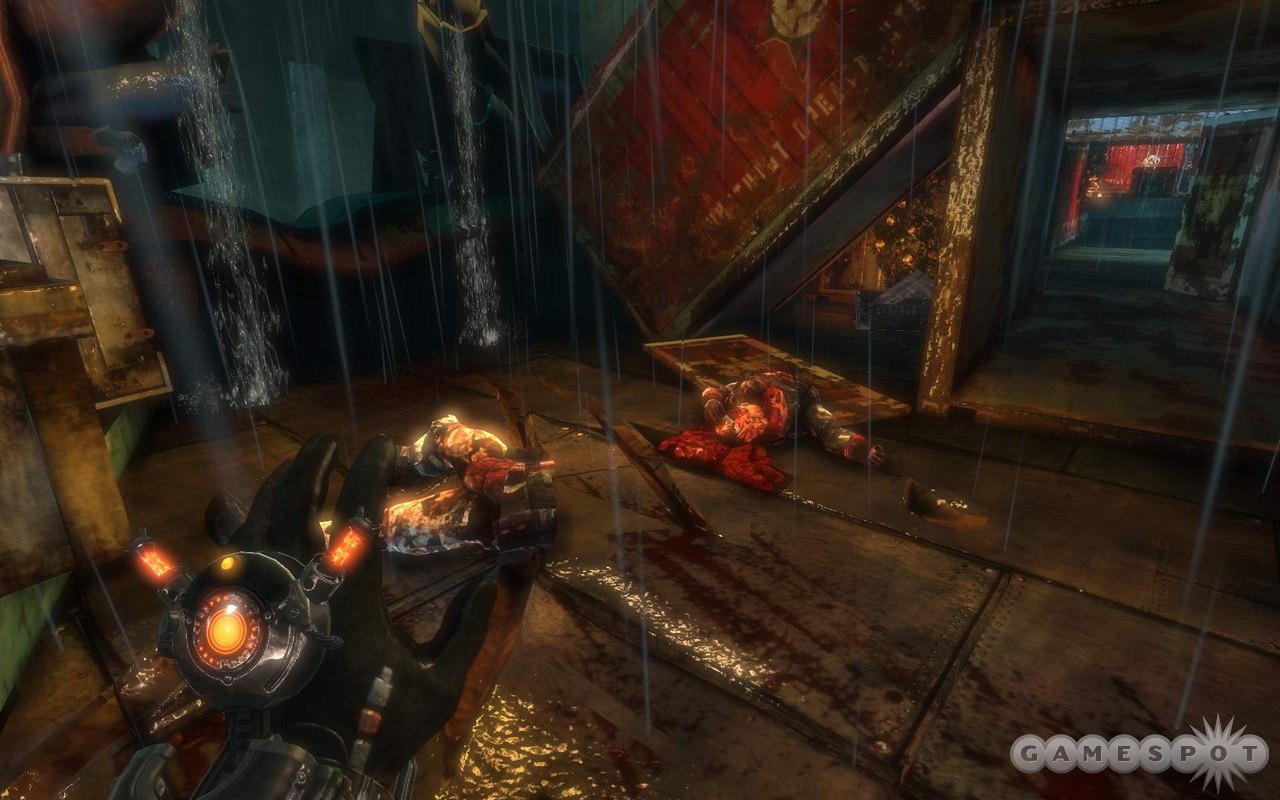D.I.C.E. 2009: Singularity First Look
Time is on your side in this sci-fi first-person shooter from Raven Software.
LAS VEGAS--2009 is poised to be a big year for the developers at Raven. In addition to the Wolverine movie tie-in game, the studio is working on a new Castle Wolfenstein game and a new IP known as Singularity. The game was teased at E3 last year, but since then, publisher Activision has been reticent about revealing details on the game. Today at the D.I.C.E. Summit in Las Vegas, Raven and Activision lifted the curtain on this sci-fi first-person shooter for the first time and showed us the time-travel features that look to set this game apart from its competition.
In Singularity, you play as Nate, an Air Force pilot who, in the early parts of the game, is scrambled to investigate some strange happenings on an island off the coast of Russia. As circumstances tend to do in video games, things go pear-shaped and you find yourself stranded on the island after your plane crashes. From there, it's up to you to discover the mystery of the island, while remaining alive in the process. Toss in a time-travel complication that keeps flipping you between 2010 and the 1950s, and there seems to be a lot going on in Singularity's story.

While producers are remaining mum on many of the plot details, the important point is that early on in the action Nate acquires a time manipulation device that he wears on his wrist. It's around this handy gizmo that much of the gameplay in Singularity revolves, because the TMD turns out to be an incredibly powerful device, capable of changing the flow of time around an object.
Consider the exploding barrel, the standard of video game shooters. While not every barrel in Singularity can be blown up right off the bat, with some careful application of the TMD, you can turn that boring old barrel into a bright red canister of exploding doom by simply reversing time. Of course, reversing time on an object is only half the fun. You can also age an object until it crumbles from the rust.
By manipulating the time around an object, you can use the TMD to surprising effect, making it an ideal tool for solving puzzles. For instance, you might be able to hop on top of a dilapidated structure and then reverse time with your TMD to revert it to its full structure and height, allowing you access to a place you might not otherwise be able to reach. Other examples we saw in the game demo included repairing a damaged walkway by using the TMD to reverse-age it, as well as using the TMD to patch up a leaking pipe in the corridor of a ship by reversing time on it, then using the TMD to age a pipe further down the same corridor in order to cause it to burst and put out a fire that was impeding Nate's progress.
As handy as the TMD is for solving puzzles, it might be even better for getting out of sticky combat situations. Raven producers told us that you can play Singularity as a straightforward run-and-gun shooter, but after we got a glimpse of what the TMD can do in battle, that hardly seems like the best way to play the game. During several encounters with enemies, we saw some interesting applications of TMD--such as aging a platform above enemy troops, which causes the platform to collapse on top of them. You can use the TMD defensively as well, such as when you catch a live grenade in midair, essentially freezing it in space and time, and then shoot it back at your foes. Our favorite combat use of the TMD, however, was grabbing an enemy and instantly aging him into dust. Interestingly, producers told us that you'll also be able to temporarily revive dead non-player characters with the TMD, such as when you need to extract a final bit of information from them.
So, it's clear that the time manipulation device is powerful. That said, it won't make you an unkillable god in Singularity. The developers are still toying with the TMD; in fact, they're specifically looking to institute some sort of cooldown that will prevent you from using the device in rapid succession. While the TMD doesn't need to be recharged at any point, only certain objects in the world can be affected by the device (such as those doused with the fictional Element 99, which is a mysterious substance that both the Russians and the Americans are keen on acquiring). While most interactive objects will be pretty obvious, you'll also have a "ping" ability at your disposal, which will send out a radarlike blast that will clearly illuminate every interactive object in the area.
The TMD won't be your only cool device. There's also the chrono-light, which serves as a flashlight but can also be used to observe objects as they appeared in the past. In the demo, we watched producers use the chrono-light on a wall, which, when illuminated, revealed a written message that might serve as a clue to continue your quest or might fill in a gap in the game's storyline. Then there's the deadlock--essentially a grenade filled with E-99 that creates a handy chronostasis bubble when thrown. You can use it to stop enemies in their tracks, as mobile cover, or as a handy trap to kill multiple enemies at once.

You'll need all of these weapons when going up against the array of bad guys you'll face in Singularity. In addition to soldiers from the near future and the 1950s, you'll run into stranger foes, such as monsters that have mutated as a result of the "fluid" time scenario on the island. Examples include phase ticks, which are insectlike mutants that can splatter their enemies with E-99-doused slime and revert them back to devolved puddles of organic goo, and Zeks, which are humanoid baddies that can phase in and out of time and cannot be harmed when phased into the past. We also saw a demo of an epic level set later in the game, where you pilot Nate through a train that's caught on a rickety bridge that's being attacked by an absolutely massive alienlike mutant. It's a thrilling set piece that looks to use your shooting skills and Nate's time-travel gadgets in equal balance.
Singularity is running on the Unreal engine, which is most notable in the game's bright and vivid color palette when playing in the present-day setting. However, when you travel back in time to the 1950s--whether of your own accord through a time rift (another ability you'll acquire as you make your way through the game) or as a result of the period time waves that wash over the gameworld--the environments undergo a noticeable change in color saturation, making the 1950s "feel" older even as you walk around through the levels. This visual change will be crucial for solving puzzles that require you to shuttle back and forth between the two time periods.
In fact, it's the very notion of time travel that intrigues us most about Singularity's gameplay and storyline. Developers told us that they plan to include lots of moments of time-travel screwiness in the game. An example: Remember the aforementioned walkway that you patch up with your TMD? Nate needs to repair that walkway to get on a ship that holds a secret to his entire predicament. After solving a few puzzles that involve raising the sunken ship out of the sea (thanks to some handy amplification of his TMD), Nate begins to make his way toward the ship.
As he's moving toward it, all hell breaks loose, and from his limited vantage point, you can see bullets being fired and hear people screaming and the roar of something very, very large. Eventually a huge cargo crate is tossed off the side of the ship and crashes onto the very walkway you just repaired. Had Nate been there before, repairing the walkway only to have it destroyed again and again in an infinite loop? Another tantalizing tip: When using the aforementioned ping ability, you'll be able to see footsteps on the ground, which will lead you to your next objective. But if those footsteps are leading you to your ultimate goal, they must be Nate's footprints, right? In effect, it seems you'll be following yourself in the game. Here's hoping these kinds of time-travel brain benders pop up all over Singularity's gameplay.
Raven's challenges with Singularity include making sure that the time-travel conceit doesn't devolve to a mere gimmick in the gameplay, that the first-person shooting action holds up on its own accord, and that there's enough variety to keep you engaged for the entire ride. If the developers wrap these features around a fun plot, Singularity might make good on the promise we've seen today. The game is currently on target for release in 2009, so stay tuned for more reports on the game's progress in the coming weeks.
Got a news tip or want to contact us directly? Email news@gamespot.com


Join the conversation